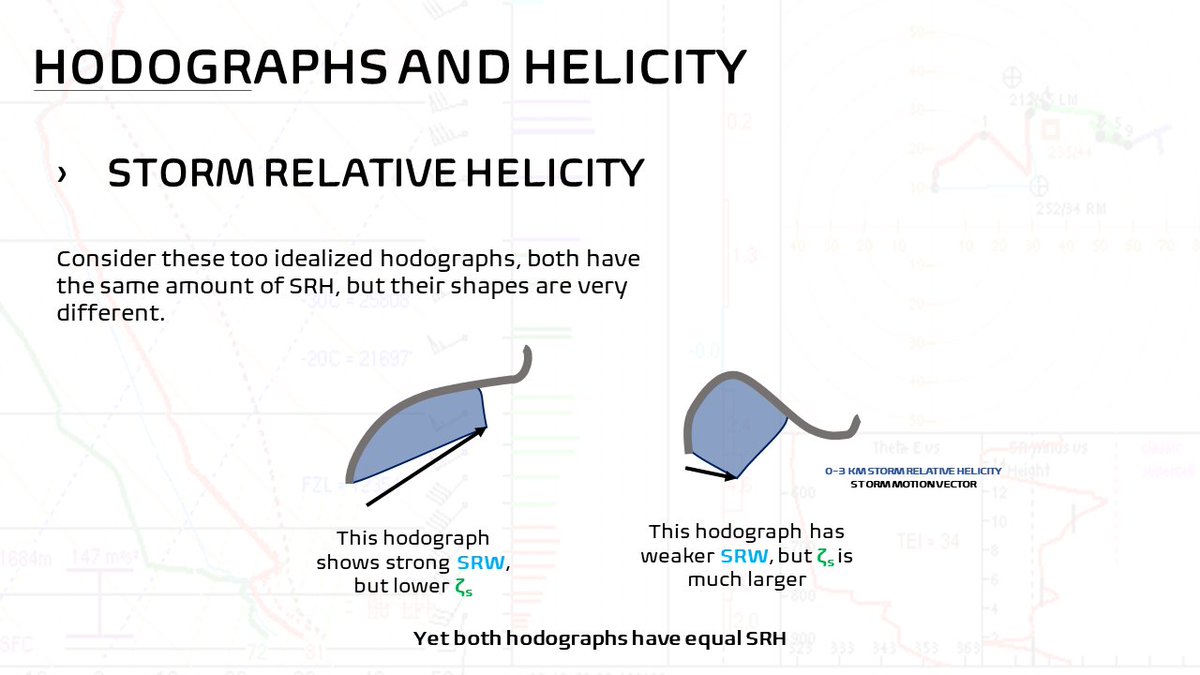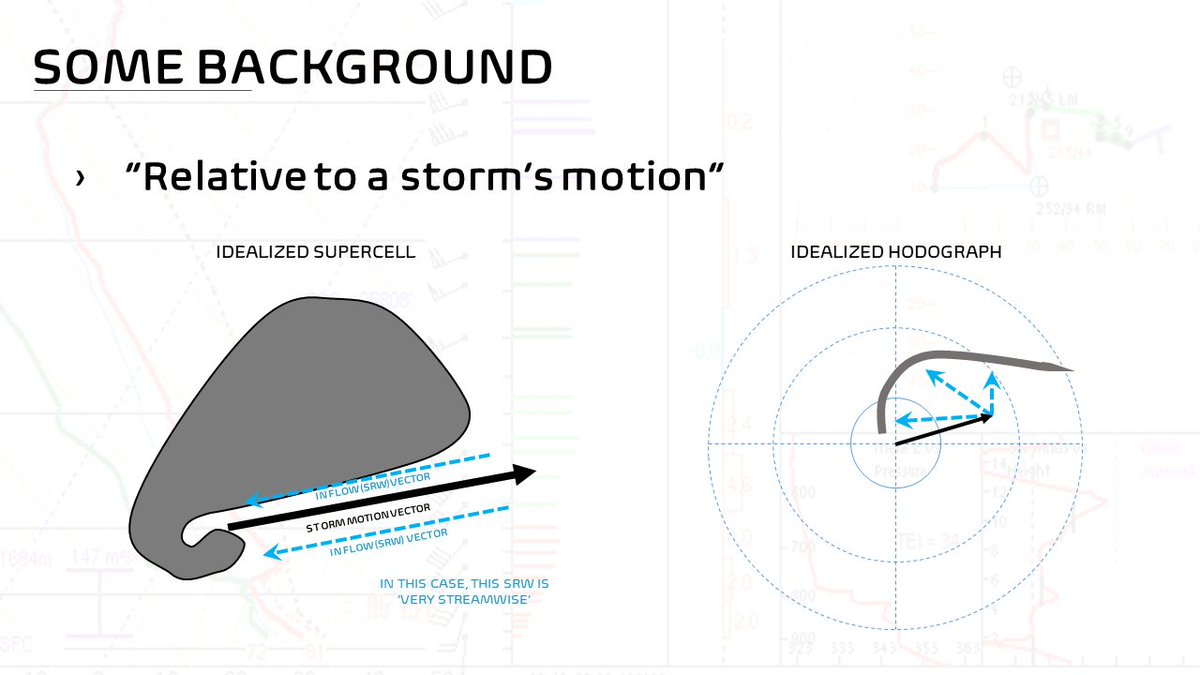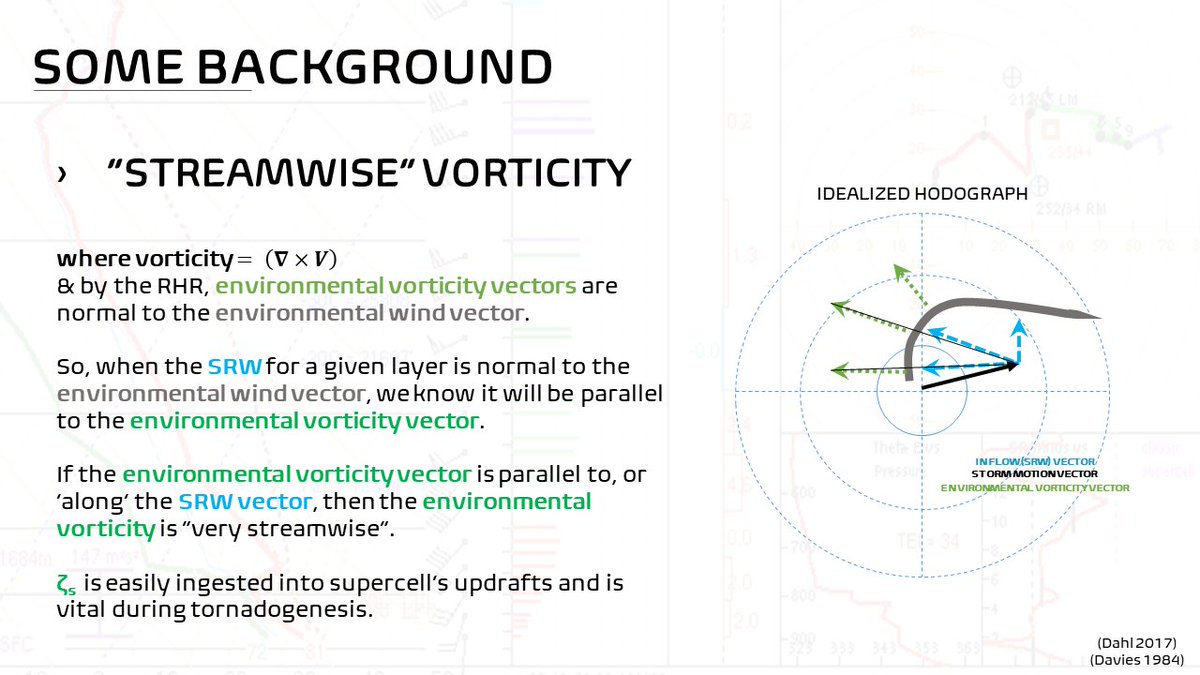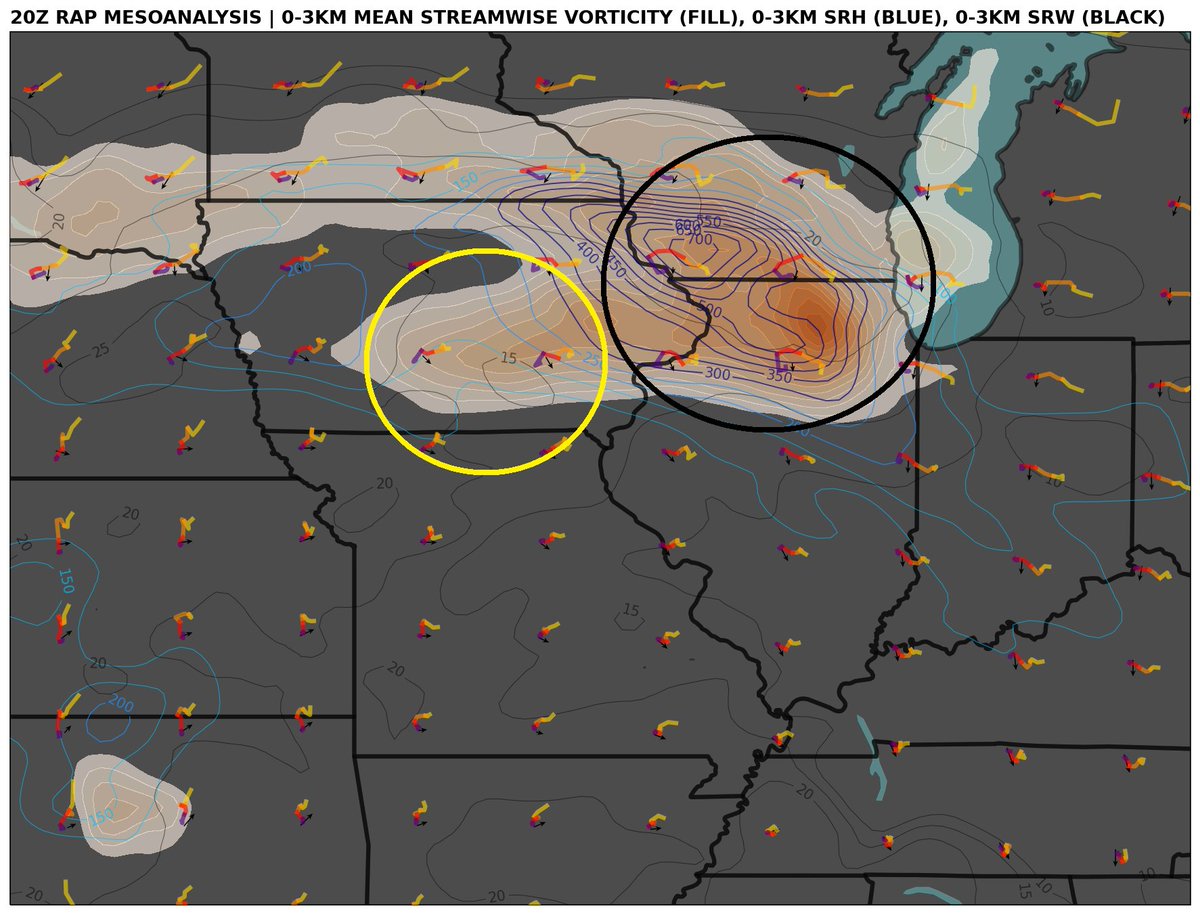I want to expand on my thread yesterday about understanding the caveats of Storm Relative Helicity.
Here is an idealized example of two hodographs that theoretically have equal SRH but very different shape. This goes back to the calculation of SRH that uses SRW and SWV (1/9)...
Here is an idealized example of two hodographs that theoretically have equal SRH but very different shape. This goes back to the calculation of SRH that uses SRW and SWV (1/9)...

First, let's look at Storm Relative WInd (SRW). This is the 'wind' 'created' by the storm's forward motion. This motion is what you know as the 'RM' (Bunkers Right Mover) point on a hodograph. This flow of wind also acts as inflow, feeding air into a storm's updraft. (2/9) 

We can easily estimate the magnitude of SRW by drawing a vector from the 'RM' point on the hodograph back to the environmental wind itself. If you draw a vector from the RM point to the wind at 1km, you have estimated the 1km SRW! (3/5)
Next is streamwise vorticity (SWV). Without getting too into the weeds here, we know that the vorticity vector is perpendicular to the environmental wind. Thus, we can compare the vorticity vector and the SRW vector you found above to determine if it is 'streamwise'. (4/9) 

"Streamwise" simply means 'along some flow', and in this case that flow would be the SRW (recall, SRW is inflow, and we want our vorticity to be easily ingested by a storm's inflow!). So, if our SRW and vorticity vector's are parallel to each other (or close to it)... (5/9
...then our vorticity is very streamwise! That's good for a storm, because our vorticity can be well 'captured', if you will, by the storm's inflow and it's updraft.
(there are other factors that play into this, of course, such as updraft width, CAPE etc). (6/9)
(there are other factors that play into this, of course, such as updraft width, CAPE etc). (6/9)
Now back to SRH, which is conceptually defined as the area swept out by the RM point over some depth. Now that we know that SRW and SWV both vary with the storm motion, it's obvious that even without knowing the calculation, SRH can vary with SRV and SRW. (7/9) 

Above I noted that SRH is often used to diagnose SWV, and therefore to diagnose several supercell properties that vary with SWV. But now that we have learned that SRH varies with SWV *and* SRW: we now know that SRH doesn't always tell us about those supercell properties... (8/9)
...the way we'd like it too. Recent research suggests that SRW and SWV likely have very different influences on storm properties and behaviors, so SRH can mean different things too! (9/9)
• • •
Missing some Tweet in this thread? You can try to
force a refresh

 Read on Twitter
Read on Twitter






